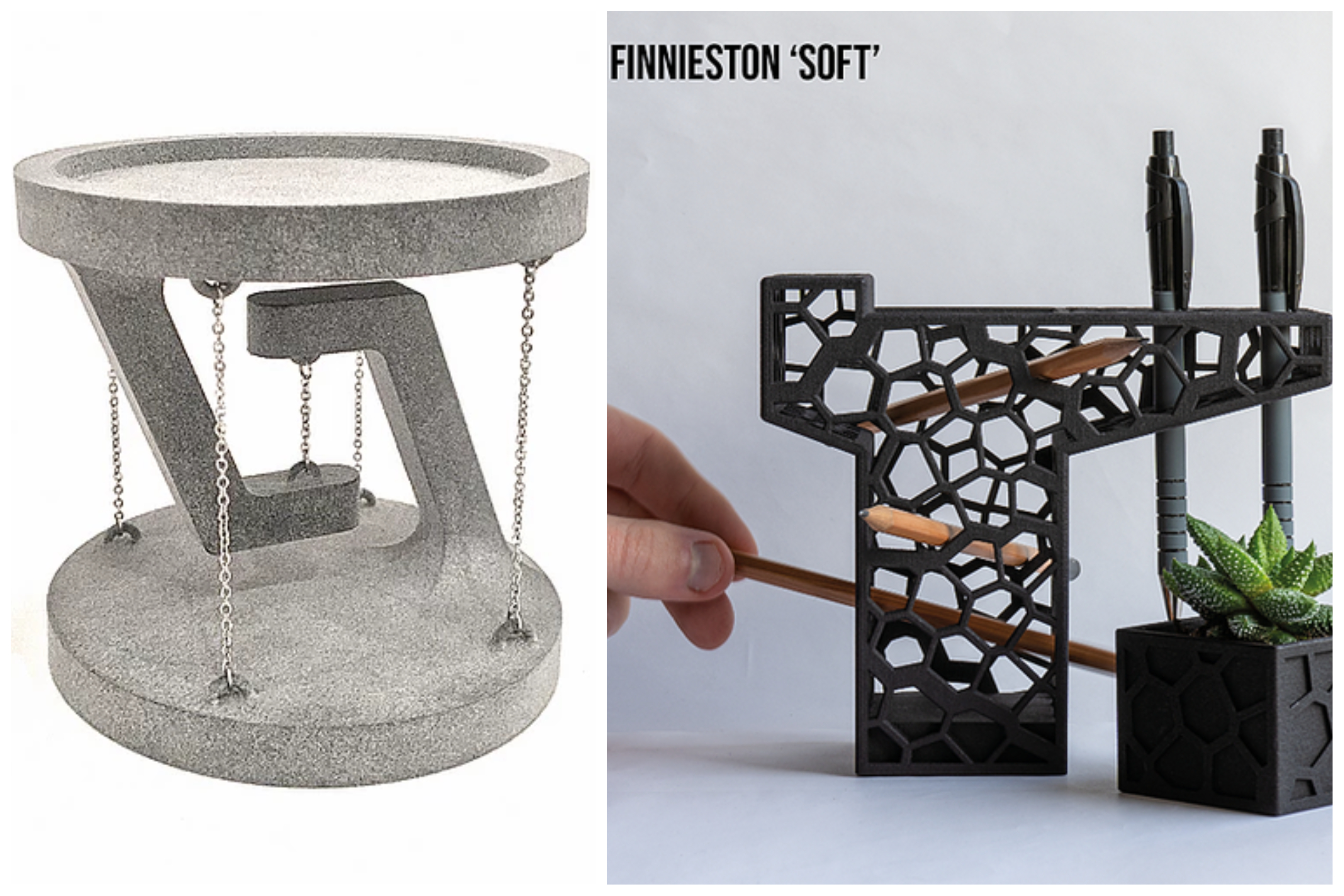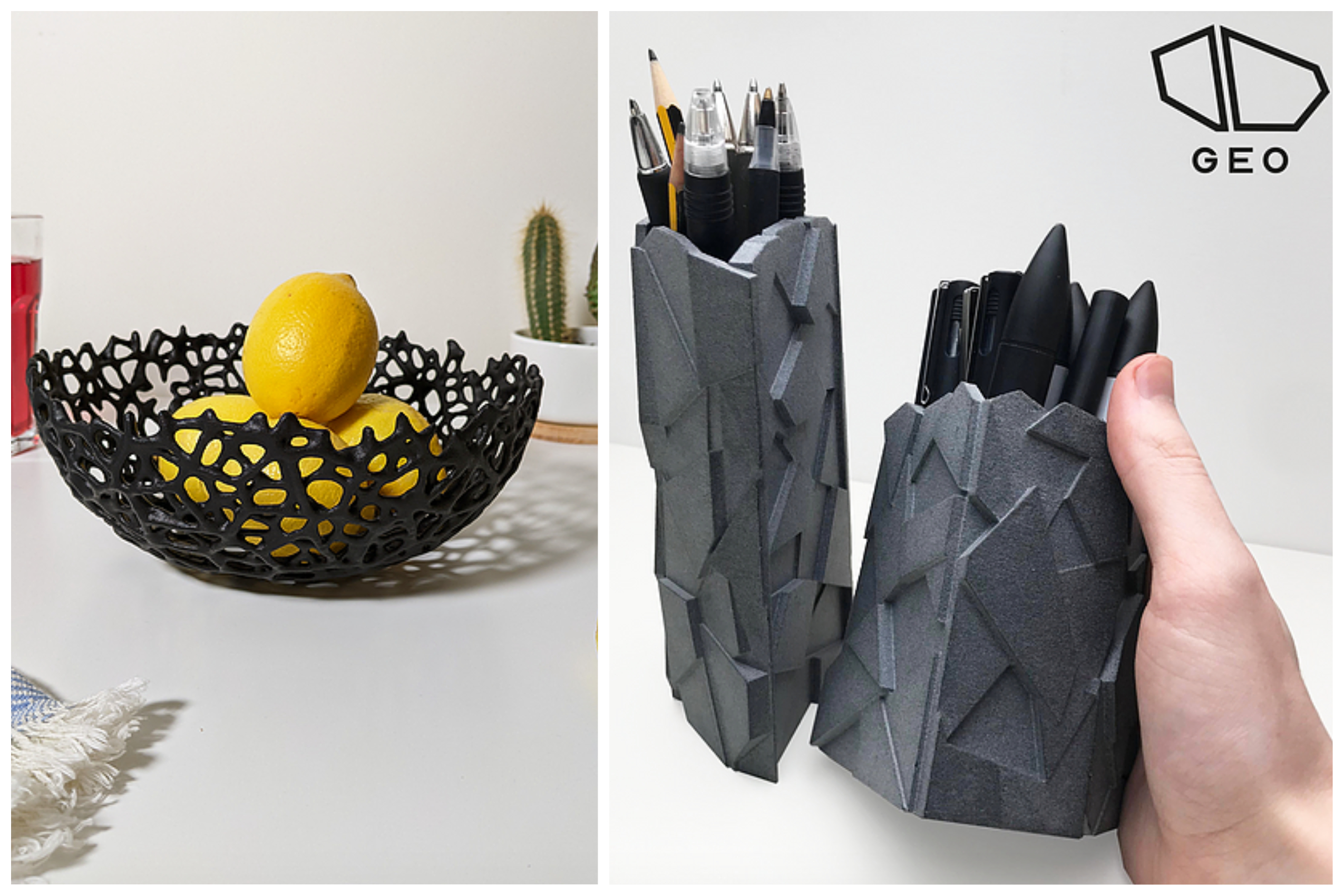3D printing has become an ideal learning tool that opens up new possibilities, helps students develop new, creative thinking, and prepares them for life and work in the digital age. Throughout the last few years, education programs around the world have begun incorporating additive manufacturing (AM) technologies to drive digital engagement and transform ideas into tangible work. We recently learned that fourth-year Product Design Engineering (PDE) students at The Glasgow School of Art (GSA), in Scotland, used HP’s 3D printing technology for their final-year projects.
Each year, fourth-year PDE students must design, develop, and manufacture a product to sell as part of their GSA–University of Glasgow four-year program. Known as the “PDE Collection,” the aim of the project has been to design and make a batch of giftware products to be sold through art and design retail shops. In 2020, due to the ongoing COVID-19 pandemic’s unprecedented challenge to public health, work environments, and disruption to education systems, student access to prototyping and modelmaking facilities and equipment has been limited. So, GSA decided to link up with high tech companies HP and Autodesk, and UK HP reseller Matsuura to provide 24 students with access to cutting edge 3D printing technology and state of the art design software.

3D printed tensegrity plinth “Floating Compression” by Andrew Lunardi and Finnieston desk organizer by Kieran Larssen. Images courtesy of the Glasgow School of Art
From jewelry to sculptures, and a wide variety of home goods, like desk organizers and plant containers, this year’s “Retail Therapy 6” project spans a full spectrum of creative thinking, which includes both hand-crafted and digitally printed designs. In past years, students would normally sell their products in a pop-up store set up by the PDE department, but with the difficulties posed to retail by COVID-19, the sixth PDE collection is being sold online through personal shops powered by the e-commerce platform Big Cartel, with prices ranging from £12 to £65.
For the project, students were able to access a portfolio of tools across the entire Autodesk Fusion 360 integrated platform, which connects teams through a product development and manufacturing ecosystem with a central, cloud-based model. While HP provided access to 3D prototyping and post-processing and collaborated with channel partner Matsuura to offer further support in producing the final products. Using 3D printing technology for the prospective design engineers’ final projects offers the benefit of a fast and cost-effective approach to product design allowing greater experimentation at a critical learning stage.
Matsuura’s Additive Manufacturing Manager, Peter Harris, said that students were having a hard time developing prototypes this year mainly due to limited access to university equipment under current COVID-19 conditions. So, Matsuura worked with HP on the initiative and to produce the student-designed parts and prototypes using HP Multi Jet Fusion 5200, 4200, and 580 machines.
“It’s been a huge boost to our program to have HP as a partner on our PDE project this year. Under these difficult circumstances for the students, they are reveling in the opportunity to access this state-of-the-art 3D printing technology to bring their ideas to life,” said Hugh Pizey, PDE Lecturer at the GSA.

3D printed “Lophelia” fruit bowl by Will Johnston and contemporary stationery holder “Geo” by Matthew Szafranek. Images courtesy of the Glasgow School of Art
Examples of the student’s creative products include the “Digit Fidget”, a colorful 3D printed stress reliever that helps deal with anxiety and boredom; “Contour”, an interactive kinetic sculpture design manufactured using HP Multi Jet Fusion and Nylon PA 12 powder; an intricately 3D printed fruit bowl called “Lophelia” after a type of cold-water coral present on the west coast of Scotland; a tensegrity plinth called “Floating Compression”, and “Perch”, a smartphone stand designed with Autodesk Fusion 360 and manufactured with HP technology. There were also three different versions of desk organizers: “Finnieston”, “Geo”, and “CUBED³”, all 3D printed with the same material as Contour.
GSA student Euan Gibson-Smith described the experience of working with Autodesk and HP as ideal to create the beautiful patterns and illusions in his kinetic desk sculpture “Contour”. He also said that “if it weren’t for HP’s printing method I wouldn’t have been able to get the accuracy that I needed or the finish required to get these parts to move in the way they do.” The three versions of the ornament available for purchase are modeled after Scottish Highland mountains Ben Nevis, Ben Lomond, and Schiehallion.
Unlike other 3D printing technologies, HP’s Multi Jet Fusion prints each layer of new material and agents on top of a previous layer that is still molten – so that both layers fuse completely – delivering strong, quality, detailed, and functional 3D printed parts. In just four years, the technology has become fully integrated throughout the industry, 3D printing millions of parts every year. Maryam Qureshi, an Applications Engineer for HP, has been at the helm of building the brief for the Glasgow project and developing student interest in AM as a production tool. She said that working with the students, guiding them to manage the multiple files for the prototypes and product parts, and showcasing what is possible with HP’s 3D technology, has been very exciting.

HP Jet Fusion 5200 3D Printer, Build Unit, Natural Cooling Unit, and Processing Station. Image courtesy of HP
The project offers lessons in real-world applications, allowing students to build confidence in applying the skills learned throughout the first three years of their course work at GSA, in both the design and manufacturing phases. The beautifully crafted results demonstrate that the use of 3D printing in education encourages creativity, innovation, and out-of-the-box problem-solving, three crucial skills needed for the future of work.
Subscribe to Our Email Newsletter
Stay up-to-date on all the latest news from the 3D printing industry and receive information and offers from third party vendors.
You May Also Like
Latest Earnings Overview for Australian 3D Printing Firms Titomic and AML3D
Australian 3D printing manufacturing firms Titomic (ASX: TTT) and AML3D (ASX: AL3) reported their financial results for the period from July to December 2023, marking the first half of their...
AML3D’s Ohio Expansion: Capital Infusion and Defense Contracts to Boost U.S. 3D Printing Operations
Australia-headquartered AML3D (ASX: AL3) is making headway into the United States market with strategic expansion plans and a fresh capital infusion. The company, specializing in advanced wire arc additive manufacturing...
What the Pentagon’s Interest in Ursa Major Says about 3D Printing as an Industry
In the last couple of weeks, mainstream media attention has put a spotlight on Ursa Major Technologies, a Denver-based company dedicated exclusively to developing and producing rocket motors built with...
BAE Systems Taps AML3D to 3D Print Metal Frigate Prototype
BAE Systems Maritime Australia (BAESMA), a division of the UK’s BAE Systems, has given a contract to Australian metal additive manufacturing (AM) original equipment manufacturer (OEM) AML3D, to produce and...





























